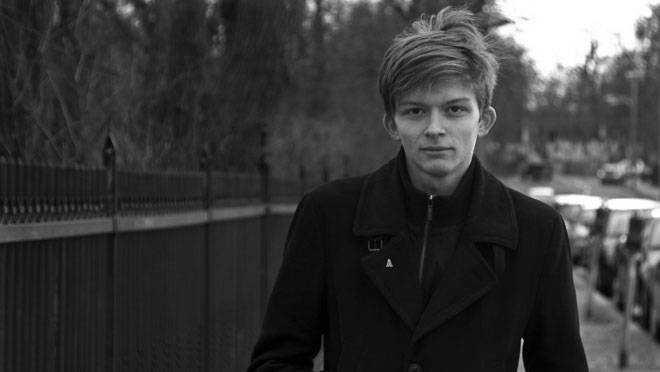When Grant Oyston sat down to write a response to the Kony 2012 phenomenon he only expected a few dozen of his friends to read it. However like many things online, within a week his blog was read more than 2 million times. Despite his desire, Grant was perceived by many as a credible source in the case against KONY 2012, even after his own admitted lack of knowledge on the LRA conflict. Hundreds of thousands of people used this second-year university student’s critiques to discredit the work of Invisible Children and the urgency of bringing a permanent end to the LRA. I recently spoke with Grant and discussed the KONY 2012 phenomenon, the Visible Children blog, and the role that social media and blogging plays in the ever-expanding world of journalism.
Most people know Grant Oyston the blogger. What else do you want people to know about you outside of that role that they might not already know?
I am a twenty year-old student in Nova Scotia, Canada. At the time that I wrote the post I was a second-year political science student and am a third year now. I’ve been involved in a few non-profits for quite a while now. I used to volunteer with Free the Children, and worked with an organization when I was younger called Sleeping Children Around the World, which provide bedding for children. Most recently, I’m on the board of directors at an organization called CISV International. It’s an international youth organization that works in peace education. That’s where my main involvement is at the moment.
What was your reasoning behind writing the blog, and what did you hope for others to take away from it?
I think a lot of people characterized what I blogged about as being a sort of attack on Invisible Children, or that I was anti-Invisible Children, or worse of all pro-Kony. That was the most upsetting thing that I ever got. That was never my intention. It was never my intention to write an attack blog saying “no one should help them, they’re bad, they’re a scam”. That was never what I was intending to write. My purpose was simply to show other elements of the story, things that weren’t included in the video -obviously there are constraints to what you can fit into a video, but to show things that weren’t discussed in the video. To talk about other organizations, to talk about – as I understand it, what Invisible Children does and where the money goes. I raised some concerns about it certainly, but my end goal was always to have people understand more and learn more, get a better sense and then do whatever they think is the right thing to do, with the best information possible…but by no means was this an attack on the great work that Invisible Children has done and continues to do.
I heard you met some of Invisible Children’s Roadies last fall. What’s the story behind that?
Yeah that was great. I actually found out about it the same way everyone else at my school did. I got an email letting me know that Invisible Children would be coming to my university. So my friends all said “You have to go, you have to go meet them. You’ve never met anyone from Invisible Children, you have to go and see them.” So I was walking across campus that afternoon and I saw Erin and everyone else unloading the big red Invisible Children van. And I went “They’re here!” It was all very exciting. It was a great opportunity. It was great to see them and to chat. It’s funny because I’ve actually had the opportunity to talk with Ben and Jason on the phone but otherwise -and of course I’ve seen your videos, it’s always been a faceless organization to me. I’ve had email and twitter contact, but it was really nice to put a face to some of the people behind it, so that was great. It was really nice to chat with them afterwards. Most of all it was relieving to me. There’s a picture of us all wearing moose hats. We hung out for about an hour after everyone else had left and I helped them pack up and we took pictures.

Grant with members of our Fall 2012 Roadie Class after a screening of The Rescue.
What would you say to people who discredited Invisible Children, but never watched KONY 2012?
To be honest I’d say this to both the people you’ve just described and also to the people who did watch the film, saw it and then did nothing. You have to be fair, there’s not just two sides to a story, there are lots of sides to every story. You’re telling a story that’s been going on for multiple decades and involves thousands of people. There’s a lot more than two sides. There are hundreds and thousands of sides to the story of Joseph Kony. No one person is ever going to understand everything about the story. That’s impossible. But if it’s something you care about you owe it to yourself to do your best to learn what you can as a reasonable person and get a decent understanding of what’s going on. It really disappointed me when people read my blog and then said oh this is all a scam, we’ll do nothing now. Especially when people had been so passionate about doing something.
You had several offers for high-profile interviews, why did you turn those opportunities down?
It was an interesting time. I refused the majority of interview requests. The rationale on my end was that I was often asked to represent some sort of anti-Invisible Children, expert in African history and politics. I am neither of those things. For those interviews I tried to refer them to someone else who might be able to answer those questions better than I would.
What type of personal responsibility do you think the average internet user has when deciding what to publish one their personal platforms and what responsibility do they have in fact-checking sources before they publish them?
I think people are still catching up in a way. I guess what I mean by that is even twenty years ago, pretty much anything that you read was printed word – either in a newspaper, a book, or a magazine, and in order to be published in any those formats at least one other person with some sort of editorial authority has read through it and reviewed it, and indicated that they also believe in it and it took a significant investment of money for it be printed in a quick run in whatever form it is. In the last 15-20 years the internet has given people the opportunity to say whatever they want to say, with no editorial oversight, it doesn’t cost anyone anything, no one is reviewing your information, no one’s fact-checking for you. That’s great and a huge benefit for lots of different reasons but from the reader end of it there needs to become an increased awareness that we’re not in Kansas anymore. Anything you read could be made up – there’s no fact-checking online and so there needs to be an increase in education on informational literacy. To be honest, I think it’s something that needs to be taught in schools more than it probably is. How to evaluate a source and credibility, how to fact-check. It’s shifted the burden of fact-checking from an editor to the individual reading it.
If you could say one thing to Invisible Children’s supporters and critics, what would you say?
To critics I would say, Invisible Children may not be the organization for you but I would urge you to find one that is and support it. I hope Invisible Children would agree with that. Different people have different ideas about what can be done but at the end of the day everyone wants justice and everyone wants rehabilitation for the people affected. Anyone who does anything to support that cause as a whole is doing good work. I would definitely urge critics to find something and do something. To supporters: …Organizations learn and improve by constructive criticism and internal discussion…So to supporters I would say keep doing what you’re doing and keep asking questions.
In the last 365 days, two of the top five commanders in the LRA have been taken off the battlefield, LRA killings have dropped 67%, the Invisible Children youth rehabilitation center is open at full capacity, and Joseph Kony became the most wanted criminal in the world. But a viral video is not going to end this war. To bring peace, it will take commitment from all of us. Join us.
To learn more about Invisible Children’s financials or to find answers to frequently asked questions please visit our website.
Listen to the interview in its entirety here:
(Photo credit: Canadian Press)

Think people should hear about this?